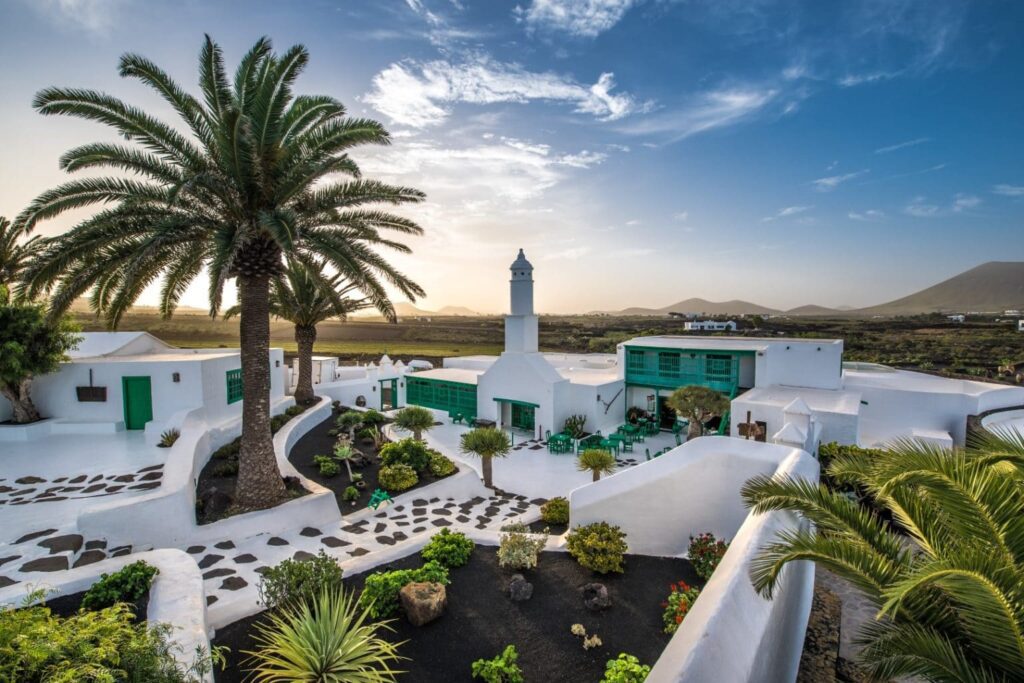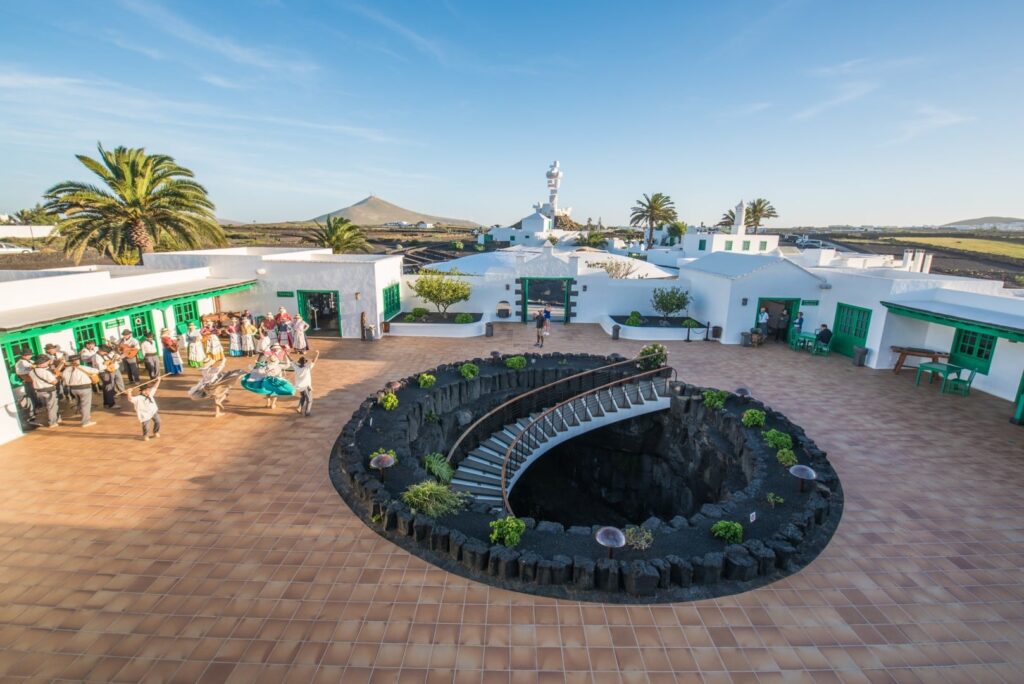“Monument to the peasant”
The Monument to the Peasant “Casa-Museo del Campesino” is located in the centre of Lanzarote, in the municipality of San Bartolomé. It is the work with which César Manrique recognizes the efforts of the peasants of Lanzarote, who faced the most adverse conditions to bring some life to the territory.
La Casa-Museo del Campesino is a journey through the Architecture, Agriculture, Crafts and traditional Gastronomy, which is completed with the Monumento a la Fecundidad (Monument to Fertility), an avant-garde work in which César Manrique wanted to pay his particular tribute.


The restaurant offers the tasting of traditional dishes and flavours of the island’s cuisine: millet broth, goat meat stew, octopus with green mojo, or the famous Canarian wreckfish stew, made with market products, all paired with the largest selection of wines of Lanzarote Designation of Origin.
And for cheese lovers, we have a careful selection of fresh, semi-cured or cured Lanzarote cheeses. Handmade cheeses made mostly with goat’s milk, but also exquisite blends with sheep’s and cow’s milk. Undoubtedly a pleasure for the senses and a better souvenir.


- Unique architecture: the architectural ensemble of la Casa-Museo del Campesino is a clear example of a unique architecture, where you can appreciate the close relationship of the local people with their territory. The farmer, out of necessity, learns to create a habitat in a predominantly arid and volcanic environment.
- The traditional dwelling and the tool room whose function was to store tools and agricultural equipment.
- Farming tools and camel saddles, a haystack and a soco(stone circle to preserve mainly vines, but also fig and mulberry trees).
- The winery and the reservoir, as well as the vineyard, mulberry trees and palm trees. It will even be possible to appreciate how the house blends into the countryside.
- El Monumento a la Fecundidad (Monument to Fertility), also known as el Monumento al Campesino (Monument to the Farmer). It is a construction of more than 15 meters, created by César Manrique together with the artist Jesús Soto, out of old water tanks from ships, iron and concrete objects assembled, a magnificent example of avant-garde art, which has become one of the iconographic symbols of the island.
- The path (camel saddles and tools) -Walking along the path that leads us to the back edifications, we find exposed different pieces of tillage and camel saddles, a haystack and a soco (circle of stones to preserve mainly vines, but also fig trees and mulberry trees).
- Plaza de los Artesanos – La Plaza de los Artesanos (Artisans’ Square) is part of César Manrique’s project built over a stone quarry. Here are located master craftsmen of the island, which will show you the keys to different traditional techniques of Lanzarote.


Braiding and Handicraft Hat Making
Craftswoman: Yolanda Benedicta Torres Moreno
The natural heart of palm comes from the central leaves of the palm trees (they are traditionally cut on the day of San Juan), dried in the sun and laminated manually. The traditional braiding technique with several strands which are sewed with others, has been present on the islands over the years for multiple uses such as the creation of hats, rugs, etc.
Her products are made with artisan techniques and, for the most part, with sustainable materials such as palm hearts, porcelain or ceramics, among others, with which she creates everything from hats and headdresses to earrings or brooches.
Email: yolandatorresmoreno@gmail.com
Tel: +34 639182022


Leather workshop
Craftsman: Víctor Socas
Leather is a very resistant material traditionally used in the Canary Islands to make different utensils.
Here hides are tanned with natural and vegetable products and can be turned into articles for pets or fashion accessories such as backpacks, bags and shoes.
Email: victorsocasoaz@gmail.com
Tel: +34 649154570
Cochineal Dye Workshop
Craftswoman: Conchi García
The grana cochineal is a parasitic insect of the prickly pear, from which an extract of a natural red or crimson colour is obtained. When this is mixed with acid or alkaline substances it gives other reddish and purple tones.
During her professional development as an artisan, Conchi García has always been interested in traditional techniques and she has dedicated herself to both the smooth high loom and the traditional cochineal dyeing techniques, starting with dyeing wool and silk scarves.
Email: conchigarciarodriguez56@gmail.com
Tel: +34 636198702
Gofio and Mojo Workshop
Craftswoman: Estefanía González
Find out how to prepare the most famous of the Canarian sauces: mojo picón, or how to make a traditional gofio pella, something very typical of Canarian gastronomy that you can taste and take the recipe home with you.
Email: experimentalanzarote@gmail.com
Tel: +34 639123940
Juan Brito Foundation
The Juan Brito Foundation was founded in 2020, two years after the death of the “conejero” artist (people from Lanzarote are also known as “conejeros”) , with the aim of continuing the life project of Juan Brito Martín, that is, the defense of the tangible and intangible heritage of the Island as a safeguard of its identity. and as a social and economic driving force..